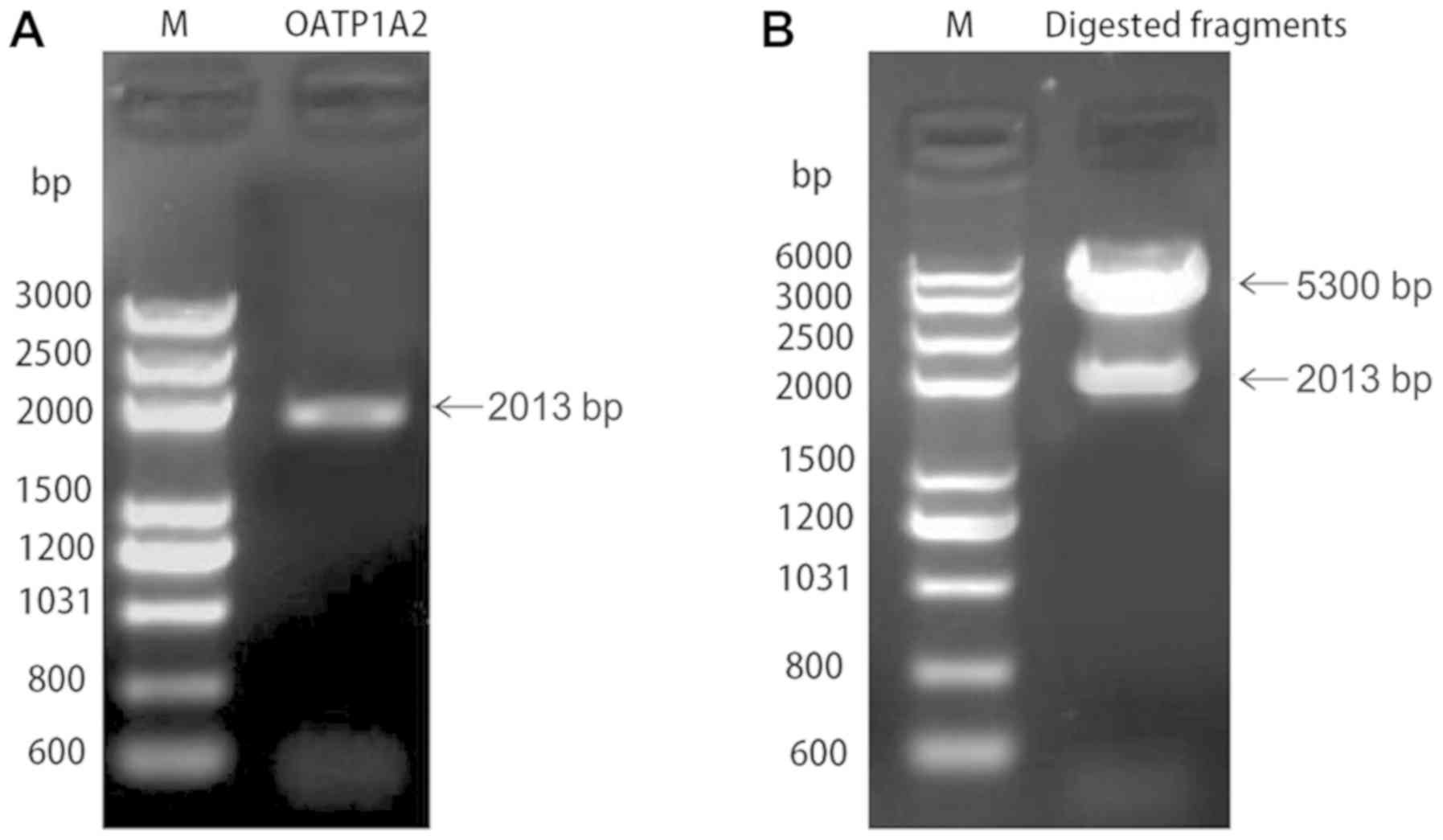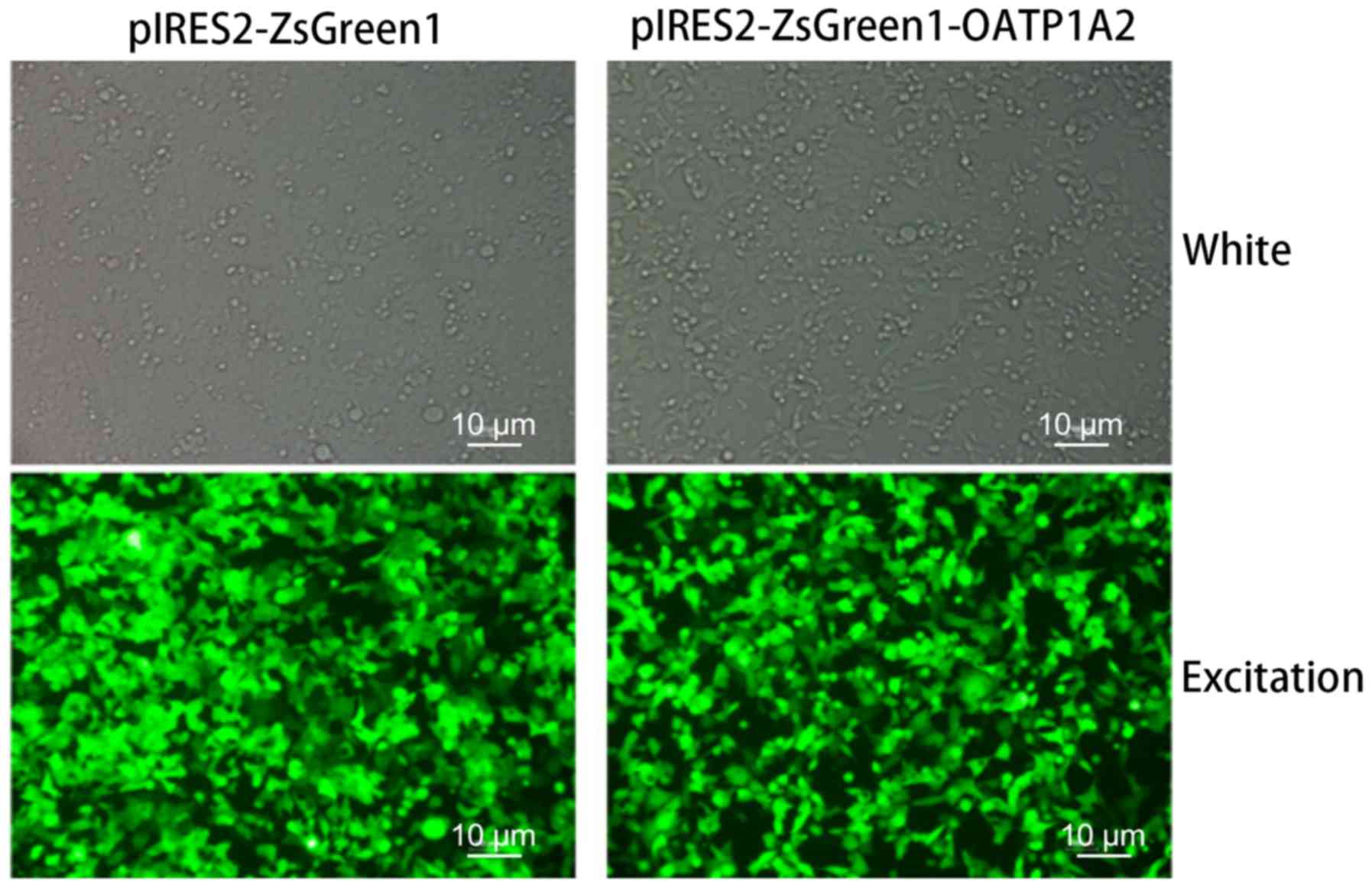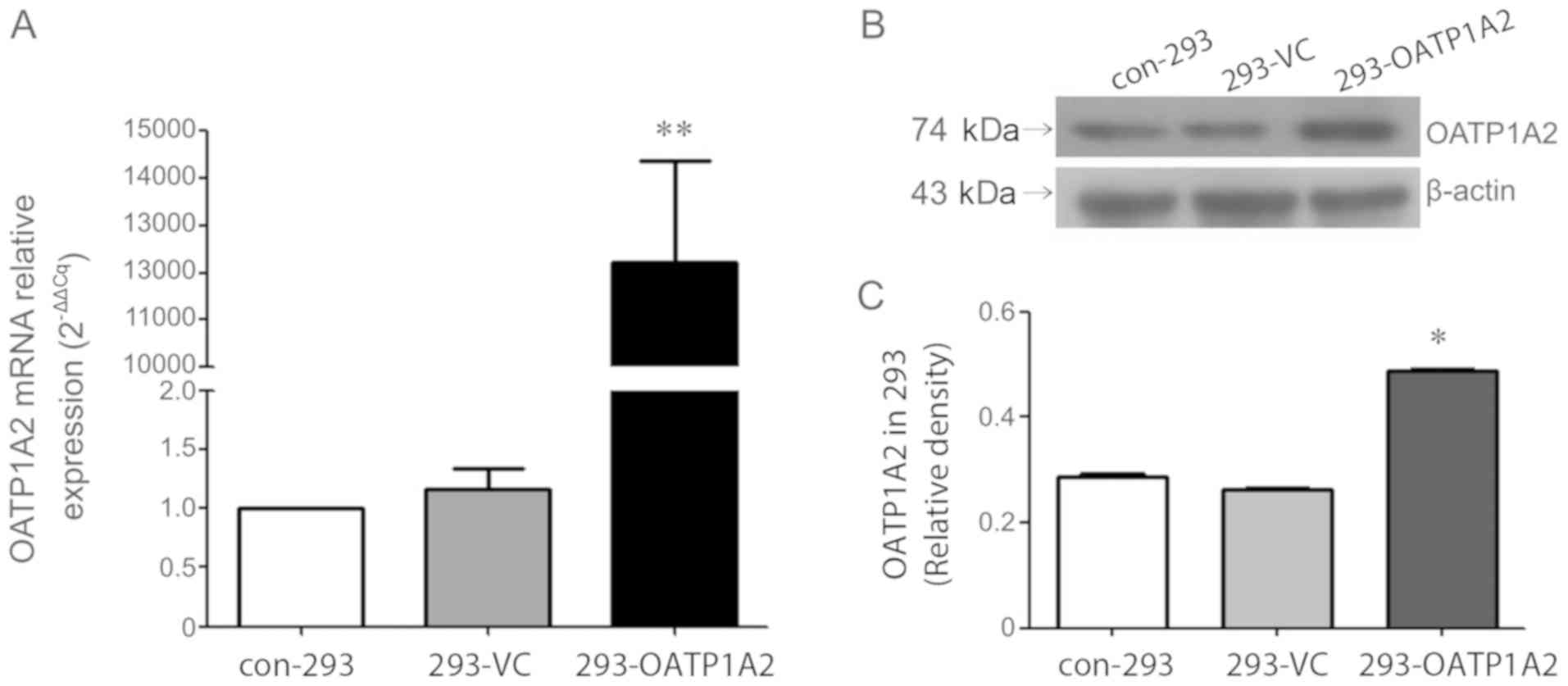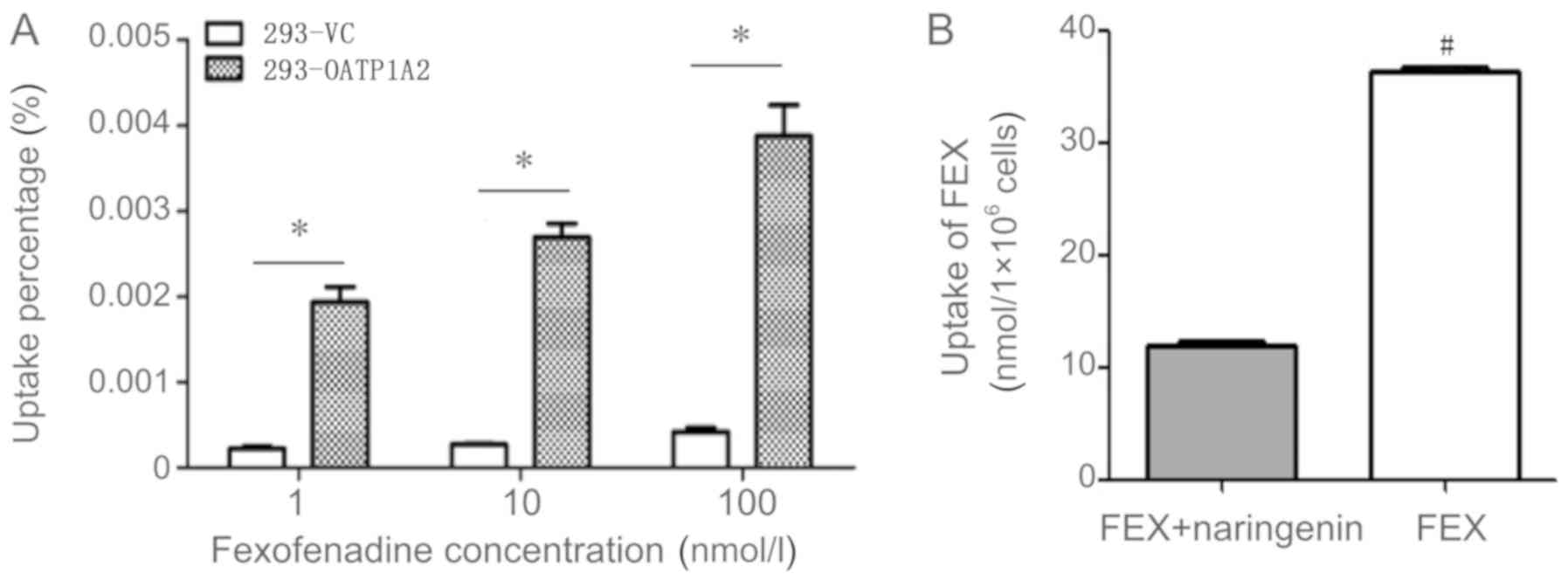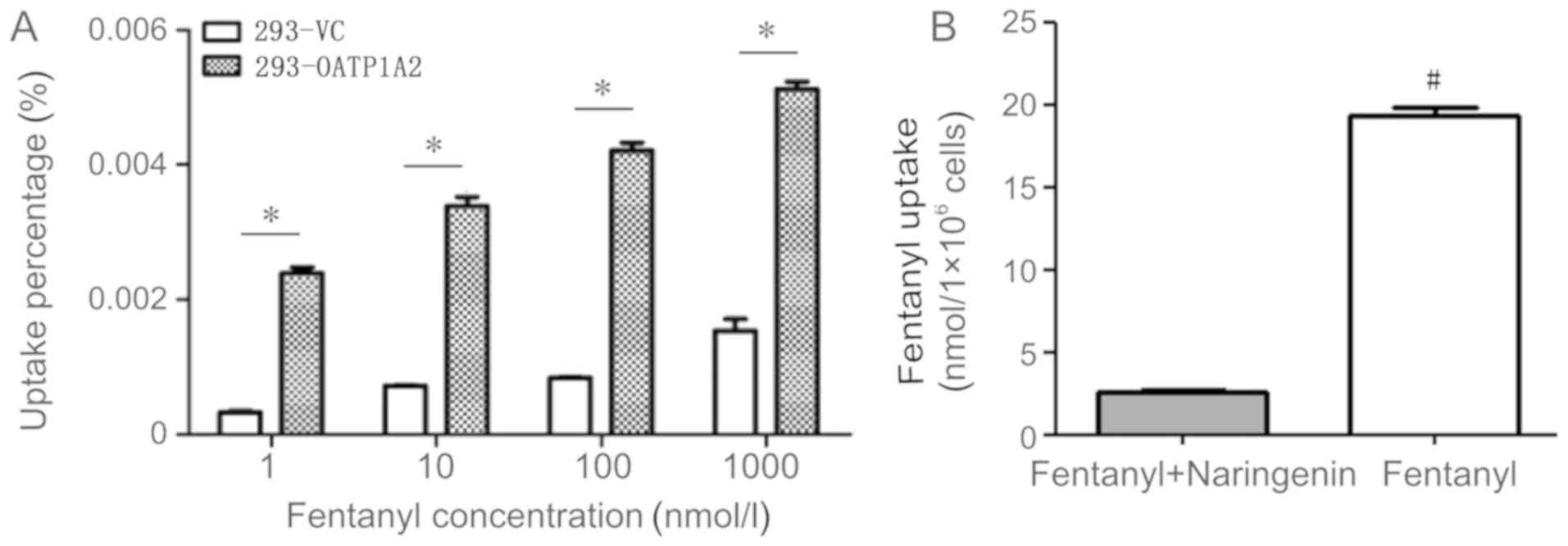|
1
|
Lane ME: The transdermal delivery of
fentanyl. Eur J Pharm Biopharm. 84:449–455. 2013. View Article : Google Scholar : PubMed/NCBI
|
|
2
|
Upton RN: Cerebral uptake of drugs in
humans. Clin Exp Pharmacol Physiol. 34:695–701. 2007. View Article : Google Scholar : PubMed/NCBI
|
|
3
|
Henthorn TK, Liu Y, Mahapatro M and Ng KY:
Active transport of fentanyl by the blood-brain barrier. J
Pharmacol Exp Ther. 289:1084–1089. 1999.PubMed/NCBI
|
|
4
|
Elkiweri IA, Zhang YL, Christians U, Ng
KY, Tissot van Patot MC and Henthorn TK: Competitive substrates for
P-glycoprotein and organic anion protein transporters
differentially reduce blood organ transport of fentanyl and
loperamide: Pharmacokinetics and pharmacodynamics in Sprague-Dawley
rats. Anesth Analg. 108:149–159. 2009. View Article : Google Scholar : PubMed/NCBI
|
|
5
|
Gao B, Hagenbuch B, Kullak-Ublick GA,
Benke D, Aguzzi A and Meier PJ: Organic anion-transporting
polypeptides mediate transport of opioid peptides across
blood-brain barrier. J Pharmacol Exp Ther. 294:73–79.
2000.PubMed/NCBI
|
|
6
|
Roth M, Obaidat A and Hagenbuch B: OATPs,
OATs and OCTs: The organic anion and cation transporters of the
SLCO and SLC22A gene superfamilies. Br J Pharmacol. 165:1260–1287.
2012. View Article : Google Scholar : PubMed/NCBI
|
|
7
|
Lee W, Glaeser H, Smith LH, Roberts RL,
Moeckel GW, Gervasini G, Leake BF and Kim RB: Polymorphisms in
human organic anion-transporting polypeptide 1A2 (OATP1A2):
Implications for altered drug disposition and central nervous
system drug entry. J Biol Chem. 280:9610–9617. 2005. View Article : Google Scholar : PubMed/NCBI
|
|
8
|
Obaidat A, Roth M and Hagenbuch B: The
expression and function of organic anion transporting polypeptides
in normal tissues and in cancer. Annu Rev Pharmacol Toxicol.
52:135–151. 2012. View Article : Google Scholar : PubMed/NCBI
|
|
9
|
Bronger H, König J, Kopplow K, Steiner HH,
Ahmadi R, Herold-Mende C, Keppler D and Nies AT: ABCC drug efflux
pumps and organic anion uptake transporters in human gliomas and
the blood-tumor barrier. Cancer Res. 65:11419–11428. 2005.
View Article : Google Scholar : PubMed/NCBI
|
|
10
|
Zhou Y, Yuan J, Li Z, Wang Z, Cheng D, Du
Y, Li W, Kan Q and Zhang W: Genetic polymorphisms and function of
the organic anion-transporting polypeptide 1A2 and its clinical
relevance in drug disposition. Pharmacology. 95:201–208. 2015.
View Article : Google Scholar : PubMed/NCBI
|
|
11
|
Gong IY and Kim RB: Impact of genetic
variation in OATP transporters to drug disposition and response.
Drug Metab Pharmacokinet. 28:4–18. 2013. View Article : Google Scholar : PubMed/NCBI
|
|
12
|
König J, Glaeser H, Keiser M, Mandery K,
Klotz U and Fromm MF: Role of organic anion-transporting
polypeptides for cellular mesalazine (5-aminosalicylic acid)
uptake. Drug Metab Dispos. 39:1097–1102. 2011. View Article : Google Scholar : PubMed/NCBI
|
|
13
|
Forster S, Thumser AE, Hood SR and Plant
N: Characterization of rhodamine-123 as a tracer dye for use in in
vitro drug transport assays. PLoS One. 7:e332532012. View Article : Google Scholar : PubMed/NCBI
|
|
14
|
Iusuf D, Hendrikx JJ, van Esch A, van de
Steeg E, Wagenaar E, Rosing H, Beijnen JH and Schinkel AH: Human
OATP1B1, OATP1B3 and OATP1A2 can mediate the in vivo uptake and
clearance of docetaxel. Int J Cancer. 136:225–233. 2015. View Article : Google Scholar : PubMed/NCBI
|
|
15
|
Durmus S, Naik J, Buil L, Wagenaar E, van
Tellingen O and Schinkel AH: In vivo disposition of doxorubicin is
affected by mouse Oatp1a/1b and human OATP1A/1B transporters. Int J
Cancer. 135:1700–1710. 2014. View Article : Google Scholar : PubMed/NCBI
|
|
16
|
Livak KJ and Schmittgen TD: Analysis of
relative gene expression data using real-time quantitative PCR and
the 2(-Delta Delta C(T)) method. Methods. 25:402–408. 2001.
View Article : Google Scholar : PubMed/NCBI
|
|
17
|
Cvetkovic M, Leake B, Fromm MF, Wilkinson
GR and Kim RB: OATP and P-glycoprotein transporters mediate the
cellular uptake and excretion of fexofenadine. Drug Metab Dispos.
27:866–871. 1999.PubMed/NCBI
|
|
18
|
Shimizu M, Fuse K, Okudaira K, Nishigaki
R, Maeda K, Kusuhara H and Sugiyama Y: Contribution of OATP
(organic anion-transporting polypeptide) family transporters to the
hepatic uptake of fexofenadine in humans. Drug Metab Dispos.
33:1477–1481. 2005. View Article : Google Scholar : PubMed/NCBI
|
|
19
|
Glaeser H, Bujok K, Schmidt I, Fromm MF
and Mandery K: Organic anion transporting polypeptides and organic
cation transporter 1 contribute to the cellular uptake of the
flavonoid quercetin. Naunyn Schmiedebergs Arch Pharmacol.
387:883–891. 2014. View Article : Google Scholar : PubMed/NCBI
|
|
20
|
Verplaetse R and Tytgat J: Development and
validation of a sensitive ultra performance liquid chromatography
tandem mass spectrometry method for the analysis of fentanyl and
its major metabolite norfentanyl in urine and whole blood in
forensic context. J Chromatogr B Analyt Technol Biomed Life Sci.
878:1987–1996. 2010. View Article : Google Scholar : PubMed/NCBI
|
|
21
|
Mandery K, Bujok K, Schmidt I, Keiser M,
Siegmund W, Balk B, Konig J, Fromm MF and Glaeser H: Influence of
the flavonoids apigenin, kaempferol, and quercetin on the function
of organic anion transporting polypeptides 1A2 and 2B1. Biochem
Pharmacol. 80:1746–1753. 2010. View Article : Google Scholar : PubMed/NCBI
|
|
22
|
Taub ME, Mease K, Sane RS, Watson CA, Chen
L, Ellens H, Hirakawa B, Reyner EL, Jani M and Lee CA: Digoxin is
not a substrate for organic anion-transporting polypeptide
transporters OATP1A2, OATP1B1, OATP1B3, and OATP2B1 but is a
substrate for a sodium-dependent transporter expressed in HEK293
cells. Drug Metab Dispos. 39:2093–2102. 2011. View Article : Google Scholar : PubMed/NCBI
|
|
23
|
Ziesenitz VC, König SK, Mahlke N, Jantos
R, Skopp G, Weiss J, Haefeli WE and Mikus G: Fentanyl
pharmacokinetics is not dependent on hepatic uptake by organic
anion-transporting polypeptide 1B1 in human beings. Basic Clin
Pharmacol Toxicol. 113:43–48. 2013. View Article : Google Scholar : PubMed/NCBI
|
|
24
|
Ose A, Kusuhara H, Endo C, Tohyama K,
Miyajima M, Kitamura S and Sugiyama Y: Functional characterization
of mouse organic anion transporting peptide 1a4 in the uptake and
efflux of drugs across the blood-brain barrier. Drug Metab Dispos.
38:168–176. 2010. View Article : Google Scholar : PubMed/NCBI
|
|
25
|
Ronaldson PT, Finch JD, Demarco KM,
Quigley CE and Davis TP: Inflammatory pain signals an increase in
functional expression of organic anion transporting polypeptide 1a4
at the blood-brain barrier. J Pharmacol Exp Ther. 336:827–839.
2011. View Article : Google Scholar : PubMed/NCBI
|
|
26
|
Lin YC, Boone M, Meuris L, Lemmens I, Van
Roy N, Soete A, Reumers J, Moisse M, Plaisance S, Drmanac R, et al:
Genome dynamics of the human embryonic kidney 293 lineage in
response to cell biology manipulations. Nat Commun. 5:47672014.
View Article : Google Scholar : PubMed/NCBI
|
|
27
|
Thomas P and Smart TG: HEK293 cell line: A
vehicle for the expression of recombinant proteins. J Pharmacol
Toxicol Methods. 51:187–200. 2005. View Article : Google Scholar : PubMed/NCBI
|
|
28
|
Stepanenko AA and Dmitrenko VV: HEK293 in
cell biology and cancer research: Phenotype, karyotype,
tumorigenicity, and stress-induced genome-phenotype evolution.
Gene. 569:182–190. 2015. View Article : Google Scholar : PubMed/NCBI
|















